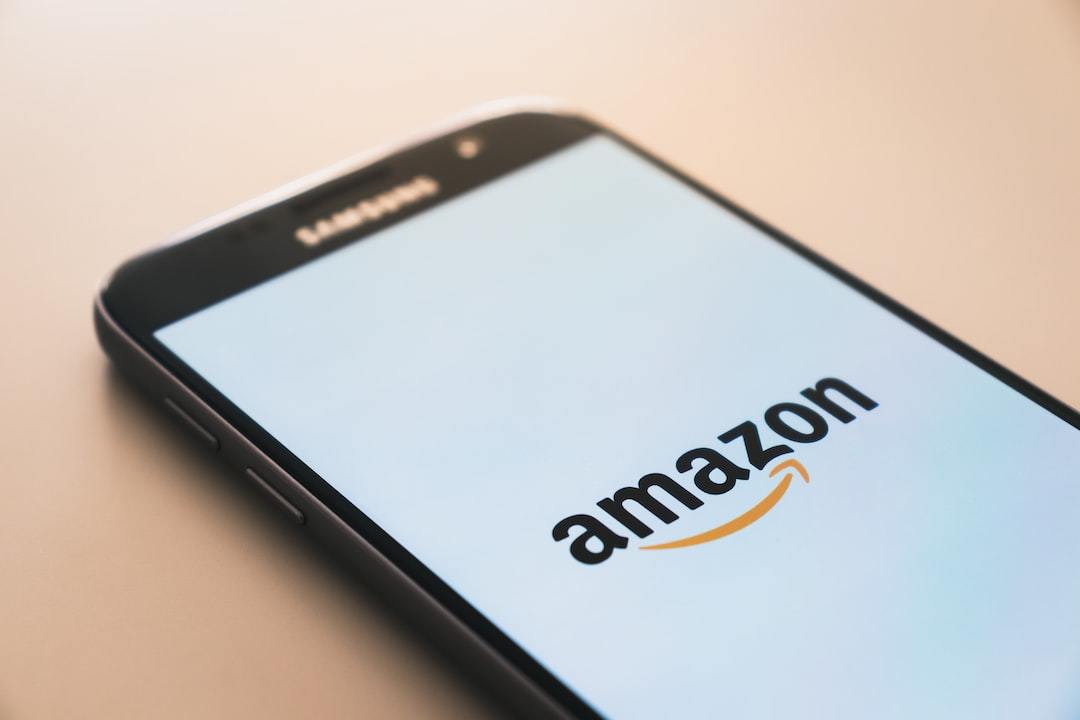Picture transforming your garage sale hobby into a booming online business. That’s the power of an Amazon FBA Business. But how do you access this treasure trove? This isn’t a get-rich-quick scheme; it’s about creating a sustainable, profitable business.
“What is Amazon FBA Business and how does it work?”
We have all the answers you need, and then some. Whether you’re looking to grasp the ins and outs of the business model or want to learn how to find products through retail arbitrage, we’ve got you covered in every aspect.
Join us on this exciting adventure as we delve into the secrets of launching a thriving Amazon business. Discover essential tactics that will propel your own Amazon venture to new heights!

Table Of Contents:
- Understanding Amazon FBA Business
- Getting Started with Your Amazon FBA Business
- Sourcing Products and Retail Arbitrage in Amazon FBA
- Setting Up Your First Amazon FBA Business
- Optimizing Product Listings for Success on Amazon
- Managing Fulfillment and Shipping in Amazon FBA
- FAQs in Relation to Amazon FBA Business
- And Finally
Understanding Amazon FBA Business
The Amazon FBA business, also known as Fulfillment by Amazon, is a revolutionary model that has transformed the online selling landscape. It’s like your warehouse in the cloud, handling storage, packaging, and shipping so you can focus on sourcing quality products and growing your brand.
Fulfilling orders might seem simple at first glance but it involves intricate logistics management. That’s where Amazon FBA steps in to help Amazon sellers, by taking care of these operations efficiently.
The Business Model of Amazon FBA
This unique business model is built around convenience for both sellers and buyers. As an Amazon FBA seller, send your stock to an Amazon fulfillment hub and let them handle the rest. Instead of investing in a brick-and-mortar retail store, Amazon FBA is like having retail stores in the hands of everyone with the Amazon app and storing it securely until someone orders from the vast Amazon marketplace or another e-commerce website. From there, they take over – storing your items securely until an order comes through.
If someone buys one of your products through the extensive Amazon marketplace or even from another online store (yes, you heard correctly), their specialized team will select the item from their expansive inventory, expertly package it, and promptly ship it out.
“But what about returns?” You may ask. Well yes – They’ve got that covered too. Returns are processed without any hassle which ensures smooth transactions every time.
A Glimmering Potential Awaits FBA Sellers…
No wonder with such benefits coupled with access to more than 100 million Prime members worldwide and well-established products; countless businesses have found success utilizing this platform – adding proof to its impressive potential for sellers.
Getting Started with Your Amazon FBA Business
If you’ve ever dreamed of starting your own online business, an Amazon FBA (Fulfillment by Amazon) could be a fantastic choice. The idea is straightforward – you sell the product, and Amazon takes care of shipping it to the customer.
The first step in this journey involves setting up an Amazon seller account. Creating an Amazon seller account is as straightforward as navigating to the ‘Sell on Amazon’ page and following the instructions.
You’ll need some basic information like email address, business,s name and address, mobile number for verification purposes, bank details for receiving pay,ents from sales and tax information which varies based on location but generally includes sociEEINsnumbers.
An investment of around $1,000 is recommended if you’re serious about starting your Amazon FBA business. This initial cost covers things such as product sourcing costs (including sample products), branding expenses including logo design & packaging materials plus shipping fees both domestically & internationally depending upon where your suppliers are located.
Selecting a Profitable Product Category
Picking a profitable product category isn’t always straightforward because what works well today may not do so tomorrow due to changes in market trends or consumer behavior patterns over time. So don’t just follow what everyone else is doing; instead, think outside the box when selecting categories/products that have high demand yet low competition.
A tool I personally use frequently for identifying profitable niches within specific categories/product types would be Jungle Scout’s Niche Hunter feature – it provides valuable insights into various metrics such as average price range per item sold under certain niches along with estimated monthly sales volume etc., thereby helping sellers make informed decisions about potential profitability before investing time & money into their Amazon FBA venture.
After selecting your niche, it is now time to find products from reliable sources. While some sellers opt for retail arbitrage (buying cheaply and selling at a profit), others prefer sourcing from manufacturers directly – the choice is yours. But remember, quality control should always be your top priority as negative customer reviews can seriously harm your seller’s reputation.
Key Takeaway:
Jumpstart your Amazon FBA business by setting up an account, picking a profitable product category with the help of tools like Jungle Scout’s Niche Hunter, and sourcing quality products. A starting investment of around $1,000 can cover initial costs including branding and shipping fees.
Sourcing Products and Retail Arbitrage in Amazon FBA
Let’s dive into the intriguing realm of retail arbitrage, a popular strategy for sourcing products in your Amazon FBA business. But what exactly is retail arbitrage? It involves purchasing products from physical or online stores at discounted prices and then reselling them on platforms like Amazon to make a profit.
Understanding Retail Arbitrage
Retail arbitrage may seem straightforward, but it requires a sharp eye for spotting opportunities. The key is to identify products that are priced lower than their potential selling price on Amazon. It’s all about purchasing items at a low cost and reselling them at a higher price. This video offers valuable tips on how to find profitable products at Big Lots.
The effectiveness of this approach greatly depends on the quality of the product; after all, customers anticipate high-quality items when they shop online. This means you’ll want suppliers who consistently deliver superior goods – something we’ll dive deeper into next.
Finding Suppliers and Manufacturers
In an ideal scenario, manufacturers produce high-quality goods while suppliers provide these with competitive pricing – this allows you to maintain attractive profit margins while offering great value to your customers.
Finding reliable sources can be daunting though; hence having access to trustworthy networks is crucial for consistent inventory flow in your store. There are several strategies you could employ: trade shows offer valuable networking opportunities with numerous manufacturers under one roof whereas wholesale directories give immediate access to multiple trusted suppliers at once.
Setting Up Your First Amazon FBA Business
If you’re looking to make a full-time income online, setting up an Amazon FBA (Fulfillment by Amazon) business can be a lucrative option. It allows sellers to store their products in Amazon’s fulfillment centers, where they handle storage, packaging, and shipping on your behalf.
But how do you get started?
The first step is finding the right product. There are countless tools and resources available that can help identify profitable niches within the marketplace.
Avoiding Common Mistakes
In this journey towards creating your own successful online business, there are several common mistakes beginners should avoid:
- Poor Product Selection: Not all products will sell well on Amazon. It’s crucial to perform thorough market research before deciding what to sell.
- Neglecting PPC Advertising: Your visibility on the platform depends largely on Pay-Per-Click (PPC) advertising campaigns. Understanding how these work can significantly increase your sales.
- Failing To Optimize Listings: An optimized listing includes high-quality images, engaging descriptions with keywords for SEO purposes, and positive customer reviews.
Taking Advantage of Facebook Marketing
Beyond just relying on organic traffic from Amazon itself or Google searches; social media platforms like Facebook offer tremendous opportunities for driving more traffic to your listings through targeted ads. By utilizing Call-To-Action (CTA), you could lead potential customers directly from Facebook posts or ads straight into purchasing your product(s).
Setting up a Facebook FBA business requires strategic planning and execution. However, with the right tools, resources, and commitment to learning from mistakes, it can become a profitable online venture that offers financial independence.
At the end of the day, sourcing products for your Amazon FBA business through retail arbitrage can be an exciting and profitable journey. As with any venture though, it needs a strategic approach to find success – one that includes understanding the dynamics of retail arbitraging and finding reliable suppliers or manufacturers.
In summary, always remember: The path to success in Amazon FBA is built upon sourcing high-quality products.
Key Takeaway:
Master the craft of retail arbitrage for your Amazon FBA venture – snag bargain items and flip them on Amazon at a profit. Don’t forget, that quality reigns supreme; always strive to deliver first-rate products from trustworthy suppliers or manufacturers. You can find these trustworthy sources by attending trade shows and referring to wholesale directories. And don’t lose sight of this: Your journey to success in Amazon FBA begins with solid foundations.
Optimizing Product Listings for Success on Amazon
The success of your Amazon FBA business largely hinges on how well you can optimize your product listings. Your products need to be distinct from the rest.
Start by crafting a compelling product description. It’s more than just detailing what your product does. Create a vivid picture that appeals to potential customers’ needs and desires, while also including relevant keywords in a natural way.
Titles matter too, but not just any title will do. Your titles should be descriptive, yet concise; keyword-rich, but human-friendly. The trick is balancing SEO optimization with readability – both are essential for successful sales conversions.
Crafting Effective Product Titles and Descriptions
An effective product title is like the headline of an engaging news article – it captures attention and sparks curiosity instantly. Incorporate key features or benefits into the title itself without stuffing too many keywords at once.
In contrast, think of your product description as storytelling with facts mixed in—a balance between a captivating narrative about how this item could improve their life balanced against concrete details demonstrating its quality/value proposition using high-impact language tailored specifically towards audience interests/preferences based upon research done beforehand (e.g., popular search terms).
Leveraging Keywords & Managing Customer Reviews
A common misconception among new sellers is believing that throwing as many keywords into their listing as possible will result in better rankings.No.. Remember: relevance trumps volume when it comes to ranking on Amazon’s search engine results page (SERP). Therefore, use only highly relevant keywords that accurately describe your product and meet customer search intent.
Customer reviews are the lifeblood of any Amazon business. A solitary unfavorable review has the potential to significantly harm sales, but don’t let it discourage you. Instead, see it as a chance to enhance and grow. Reach out to unsatisfied customers, fix their issues if possible, and kindly ask for a review update.
Doing business on Amazon has really taken off.
Key Takeaway:
Optimizing your Amazon FBA business for success means mastering the art of product listing. Create compelling, keyword-rich titles and descriptions that capture attention and create a vivid picture of your products. Don’t overdo it with keywords – relevance beats volume every time. Manage customer reviews carefully too; treat negative feedback as an opportunity to improve.
Managing Fulfillment and Shipping in Amazon FBA
Running an Amazon FBA business means letting Amazon handle the heavy lifting of fulfillment and shipping. By utilizing Amazon’s fulfillment and shipping services, you can free up valuable time to focus on growing your business.
Understanding Amazon’s Fulfillment Centers
Fulfillment centers are where the magic happens, they’re vast warehouses packed with products ready for shipment. When a customer makes a purchase from your store, these centers spring into action.
The inventory is picked up from storage, packaged securely, labeled for delivery, and shipped out to the buyer without any effort needed on your part. These facilities even take care of returns or refunds if necessary. They ensure that all orders are delivered to customers promptly while upholding high-quality service standards.
You might wonder about FBA fees. Yes, there’s a cost involved – but consider it as paying for peace of mind knowing that professionals handle every order like clockwork. Plus this lets you sell across borders effortlessly.
Navigating Inventory Management & Shipping
Your journey doesn’t stop at understanding how fulfillment works though – managing inventory efficiently can be equally important in maximizing profits. Having too much stock leads to additional storage costs while running low could mean missed sales opportunities.
Getting around this issue successfully demands keen attention to sales trends and demand forecasting tools offered by platforms such as Amazon Seller Central.
With efficient management comes optimized shipping processes: Selecting affordable carriers who deliver quickly becomes essential here – because after all quicker deliveries lead to happier customers. With Amazon FBA, you get access to Amazon’s vast shipping network and discounted rates.
Getting a grip on these aspects of your Amazon FBA business might seem daunting at first. But remember that the learning curve for beginners in Amazon FBA can be overcome with patience and following the right steps.
The secret sauce is this: start small, learn as you go along, make adjustments based on feedback – rinse and repeat until you’ve mastered managing fulfillment and shipping.
Key Takeaway:
With an Amazon FBA business, you’re free from the nitty-gritty of fulfillment and shipping – that’s all on Amazon. This level of freedom allows you to dedicate more time to expanding your business. However, it’s important to remember that efficient inventory management is crucial for maximizing profits. You don’t want too much or too little stock. Make good use of sales trends and demand forecasting tools like those found in Amazon Seller Central.
FAQs in Relation to Amazon FBA Business
Is Amazon FBA really profitable?
Yes, if you choose the right products and manage your costs wisely. The key factors for achieving success are the sourcing strategy, product quality, and customer service.
What is an Amazon FBA business?
An Amazon FBA business lets sellers store their goods in Amazon’s fulfillment centers. When a sale occurs, Amazon packs and ships the product for them.
How much does it cost to start an Amazon FBA?
The startup cost can vary greatly but Jungle Scout suggests around $1k as a starting investment.
Is selling FBA on Amazon worth it?
Absolutely. It allows access to millions of customers worldwide while simplifying logistics like storage and shipping. But remember: success requires time and effort.
And Finally
Cracking the code of Amazon FBA Business isn’t an overnight job. It’s about patience, strategy, and grit.
You’ve learned the ropes: from understanding how Amazon FBA operates to sourcing products through retail arbitrage. The value of this knowledge? Immense!
The key takeaways? Choosing a profitable product category is vital; optimizing your listings can make or break your sales; mastering fulfillment and shipping means more happy customers – hence more profits.
In short, with every detail you learn, you’re one step closer to transforming that garage sale hobby into a booming online enterprise.
Your journey has just begun! Stay curious. Keep learning. And remember… Success comes not only to those who want it but also to those who work for it relentlessly!
